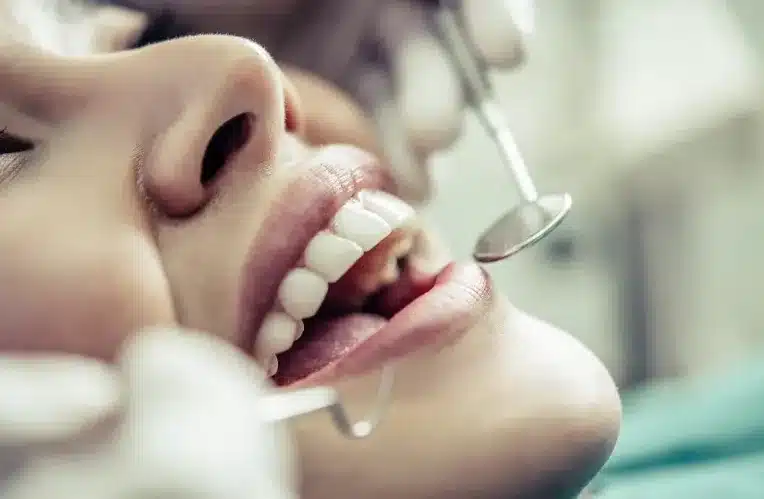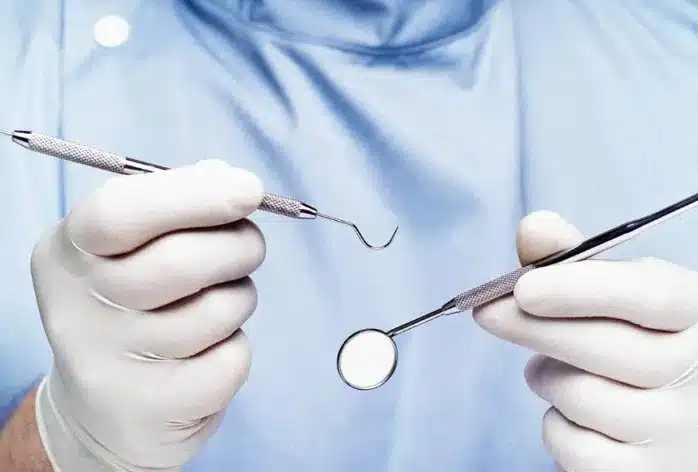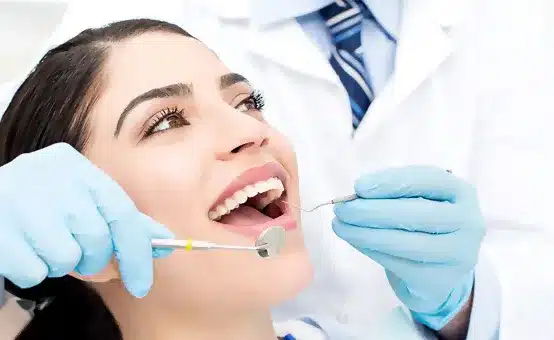Medical Dentistry, also known as dental medicine, encompasses the practice of maintaining oral health and preventing dental diseases. It focuses on dental hygiene, promoting oral health through regular check-ups and cleanings, while also addressing complex issues through various dental surgeries when necessary. With a core emphasis on preventive care and surgical interventions, medical dentistry plays a crucial role in enhancing overall well-being by ensuring optimal oral health.
History of Medical Dentistry
The origins of dentistry can be traced back to ancient civilizations. Evidence of dental treatment has been found in ancient Egyptian and Sumerian texts dating back to 3000 BCE. The ancient Greeks also made significant contributions to dental knowledge and practices.
In ancient times, dental treatments were relatively primitive and often included tooth extractions using basic tools like rocks or seashells. However, as societies advanced, so did dentistry. The Etruscans in Italy were among the first to craft dental prosthetics in the 7th century BCE, using gold wire to stabilize loose teeth.
The father of modern dentistry is often considered to be Pierre Fauchard, a French surgeon, who published “Le Chemurgies Dentiste” in 1728. This seminal work laid the foundation for modern dental practices and introduced the concept of preventive dental care.
What is Dentistry?
Dentistry is a branch of medical science that focuses on the study, diagnosis, prevention, and treatment of diseases and conditions related to the oral cavity and its associated structures. Dentists or dental surgeons are medical professionals specialized in providing oral healthcare and are responsible for maintaining the overall health of teeth, gums, and supporting structures.
Types of Medical Dentistry
Medical dentistry encompasses several specialized fields, each targeting different aspects of oral health. Some of the main types of dentistry include:
- General Dentistry: General dentists are primary oral healthcare providers who diagnose and treat common dental issues, perform routine check-ups, and provide preventive care such as cleanings and fillings.
- Orthodontics: Orthodontists specialize in correcting misalignments of the teeth and jaws using braces, aligners, and other devices to achieve proper occlusion and improve the appearance of a patient’s smile.
- Endodontics: Endodontists focus on diagnosing and treating diseases of the dental pulp and root canal system. They perform root canal treatments to save damaged teeth.
- Periodontics: Periodontists are experts in diagnosing and treating gum diseases and other conditions affecting the supporting structures of the teeth, such as the gums and bones.
- Prosthodontics: Prosthodontists are skilled in creating and fitting dental prosthetics, including crowns, bridges, dentures, and dental implants.
- Oral and Maxillofacial Surgery: Oral surgeons perform surgical procedures on the mouth, jaw, and face, including tooth extractions, dental implant placements, and corrective jaw surgeries.
- Pediatric Dentistry: Pediatric dentists specialize in providing dental care to children and adolescents, focusing on preventive measures and age-appropriate treatments.
Advanced technologies and techniques in medical dentistry empower dental surgeons to deliver efficient treatments.
Medical Dentistry Treatments
Medical dentistry treatments aim to address various oral health issues and improve patients’ overall well-being. Some common dental treatments include:
Oral Disease Management
Oral disease management involves treatments such as scaling and root planning for gum disease, dental fillings and root canal therapy for tooth decay, and antibiotics for oral infections.
Gum Disease Treatment (Periodontal Therapy)
Scaling and root planning (deep cleaning), gum surgery (gingivectomy, flap surgery), and maintenance to treat and manage periodontitis (gum disease).

Tooth Decay Management
Dental fillings (composite, amalgam), dental crowns, and root canal therapy (endodontic treatment) to restore and preserve teeth affected by cavities and decay.
Oral Infections Treatment
Antibiotics, antifungal medications, and drainage procedures for managing oral infections like abscesses, cellulitis, and oral herpes.
Oral Mucosal Disease Treatment
- Oral Lesion Biopsy and Management: Evaluation and biopsy of oral lesions (such as leukoplakia, erythrolein) followed by appropriate treatment based on pathology results.
- Management of Oral Ulcers: Medications (topical steroids, antimicrobials) and lifestyle modifications to manage recurrent aphthous stomatitis (canker sores) and other types of oral ulcers.
Oral Complications from Medical Treatments
- Supportive Care for Cancer Patients: Prevention and management of oral complications associated with chemotherapy and radiation therapy, including mucositis, xerostomia (dry mouth), and oral infections.
- Dental Clearance and Precautions: Assessment and preventive measures for patients undergoing organ transplantation, immunosuppressive therapy, or other medical treatments impacting oral health.
Management of Systemic Conditions Impacting Oral Health
- Diabetes and Oral Health: Collaborative care with physicians to manage oral complications of diabetes, such as periodontal disease and delayed wound healing.
- Autoimmune Disorders and Oral Manifestations: Diagnosis and treatment of oral manifestations of autoimmune diseases like Sjögren’s syndrome, lupus, and rheumatoid arthritis.
Dental Anxiety and Sedation Dentistry
-
- Behavioral Management Techniques: Cognitive-behavioral therapies and relaxation techniques to address dental anxiety and phobia.
- Conscious Sedation Options: Nitrous oxide (laughing gas), oral sedatives, and intravenous (IV) sedation for patients with severe dental anxiety or extensive treatment needs.
The European Union (EU) has established policies that allow physicians and dentists to move freely and practice within any of the member countries. Britannica
What Do Medical Dentistry Treatments Involve?
Medical dentistry treatments typically involve a multi-step process. First, the dentist assesses the patient’s oral health through a comprehensive examination, which may include X-rays or other diagnostic tests. Based on the findings, a personalized treatment plan is developed.
During the treatment phase, the dentist performs the necessary procedures, which may range from simple cleanings to complex surgical interventions. Local anesthesia is often used to ensure patient comfort during more invasive procedures.
Following the treatment, the dentist provides post-operative care instructions and advises patients on maintaining good oral hygiene practices. Regular check-ups and follow-up appointments are essential to monitor progress and address any potential issues.
Education and Training for Dentists
Becoming a dentist requires extensive education and training. In most countries, aspiring dentists must complete a bachelor’s degree program focusing on pre-dental courses, followed by admission to a dental school. The dental school typically involves four years of study, leading to a Doctor of Dental Surgery (DDS) or Doctor of Dental Medicine (DMD) degree.
The Advancements and Leaders Defining Dental Medicine
Medical Dentistry, often referred to as Dental Medicine, encompasses a range of specialized fields focusing on oral health and its impact on overall well-being. Prominent institutions such as Harvard School of Dental Medicine and King’s College London’s Dental Institute are at the forefront of advancing dental research and education. These universities have produced notable figures in the field, including Dr. William Morton, a pioneer in dental anesthesia, and Dr. Paul Sharpe, a leading researcher in dental regenerative medicine. Their contributions have significantly influenced modern dental practices and the understanding of oral health’s systemic connections.
In the clinical and corporate sectors, companies like Colgate-Palmolive stand out for their active role in promoting dental health through innovative products and research. According to recent industry reports, the global dental market is expected to grow significantly, with projections indicating a market size of approximately $60 billion by 2024. This growth is driven by advancements in technologies such as 3D imaging and bioprinting, which are revolutionizing dental treatments and prosthetics.
Hospitals and clinics specializing in dental medicine, such as the Mayo Clinic’s Department of Dental Specialties, leverage these technologies to provide cutting-edge care, highlighting the dynamic nature of Medical Dentistry in both academic and practical applications.
Summary
While the decision between a brow lift and eyelid surgery ultimately depends on individual concerns and desired outcomes, considerations akin to those in medical dentistry can be applied. Just as patients seek guidance from specialists in endodontics, orthodontics, or prosthodontics to address specific dental needs, individuals contemplating facial rejuvenation may benefit from consultations with specialists in plastic surgery.
A brow lift, akin to orthodontic treatment, can correct sagging eyebrows and forehead wrinkles, providing a more youthful appearance. Conversely, eyelid surgery, much like endodontic procedures, can address drooping eyelids and puffiness, rejuvenating the eye area and enhancing overall facial harmony. By consulting with experienced professionals in both medical dentistry and plastic surgery, individuals can make informed decisions tailored to their unique concerns, ensuring optimal outcomes for their aesthetic goals, much like maintaining oral health and hygiene through specialized dental care.

FAQs
1. How long does it take to become a dentist? Becoming a dentist typically takes several years of education and training. After completing a bachelor’s degree, aspiring dentists usually spend four years in dental school to obtain a DDS or DMD degree.
2. Are all dental treatments painful? Dentistry has significantly evolved, and modern dental practices aim to ensure patient comfort and minimize pain. Local anesthesia is commonly used during procedures to numb the area being treated, reducing discomfort.
3. How does oral health affect overall health? Oral health is interconnected with overall health. Poor oral health can contribute to systemic conditions such as cardiovascular disease, diabetes, respiratory infections, and adverse pregnancy outcomes. Medical dentists address oral health issues to promote overall wellness.
4. What services do medical dentists provide? Medical dentists provide comprehensive oral health care services, including dental examinations, diagnosis and management of oral diseases, oral biopsies, treatment of oral infections, management of oral complications from medical treatments, and coordination of care with other healthcare providers.
5. What is the difference between a medical dentist and a general dentist? While general dentists primarily focus on preventive and restorative dental care (such as cleanings, fillings, and crowns), medical dentists have specialized training in managing complex oral conditions that may be linked to systemic health issues. They often collaborate with other medical specialists to address comprehensive patient care.
Dentistry – 18th Century, 19th Century, America | Britannica




